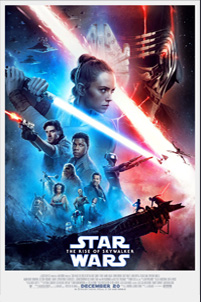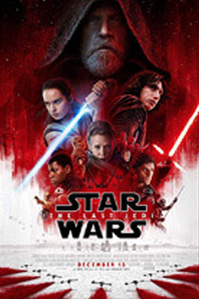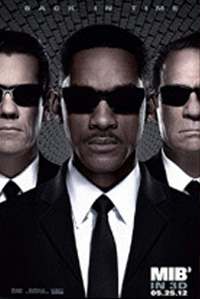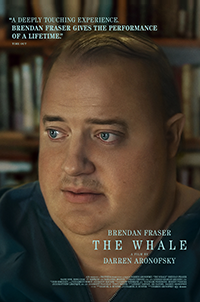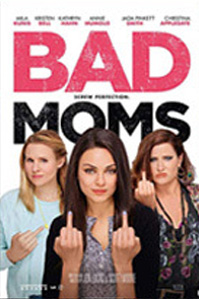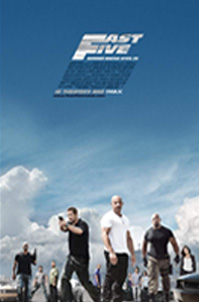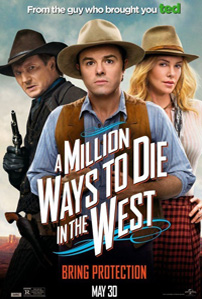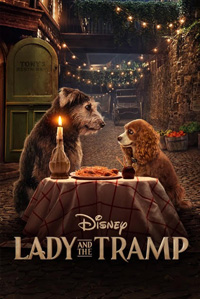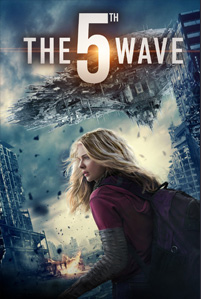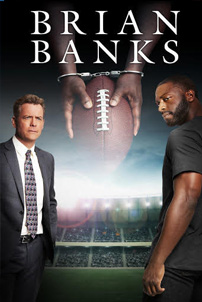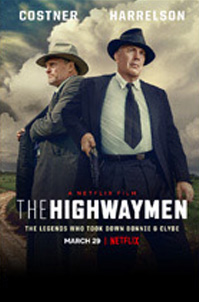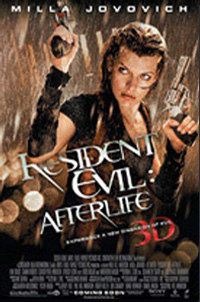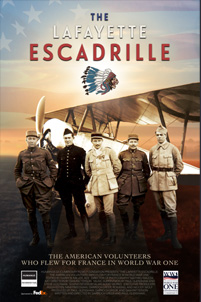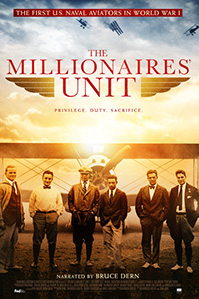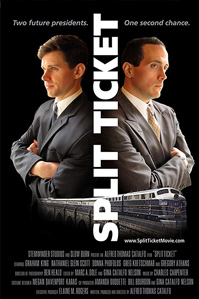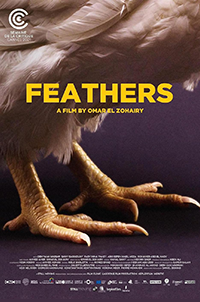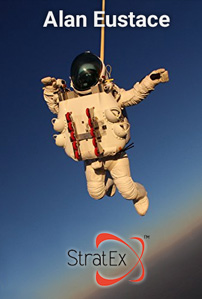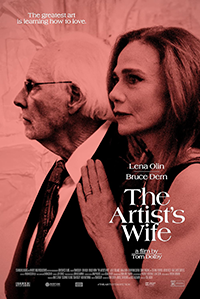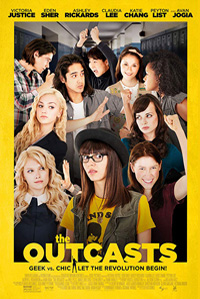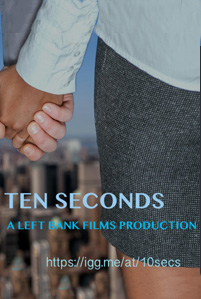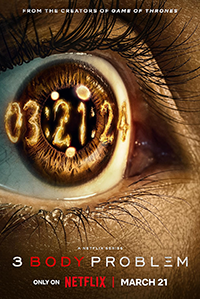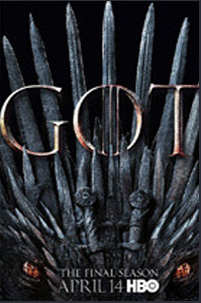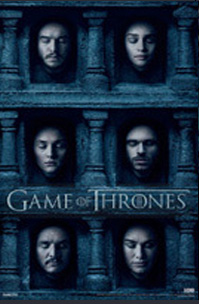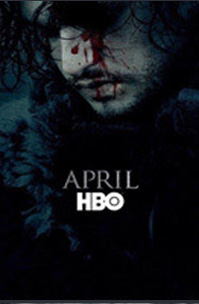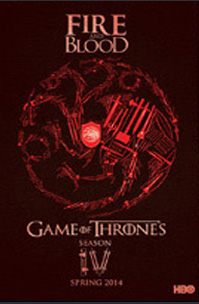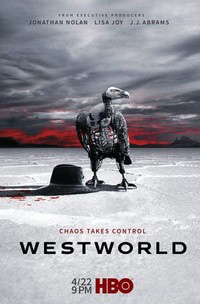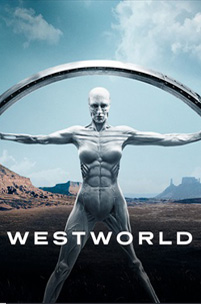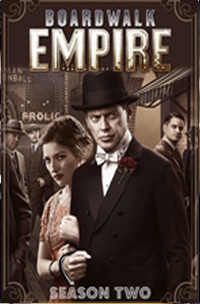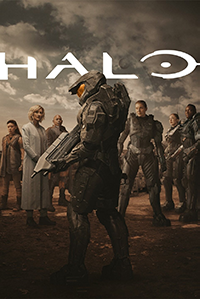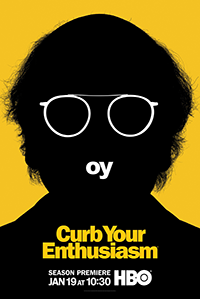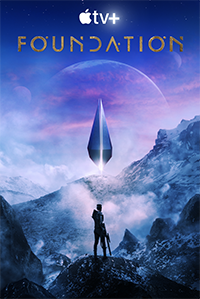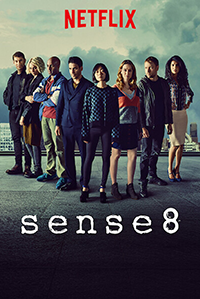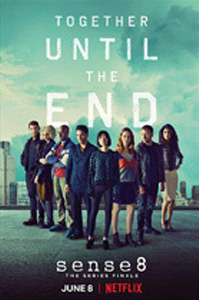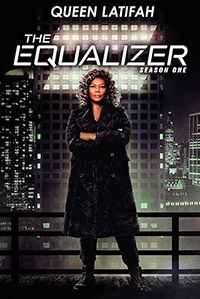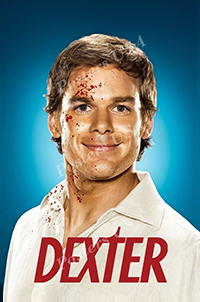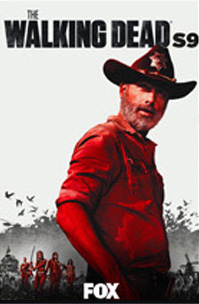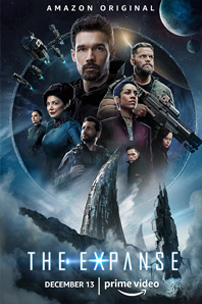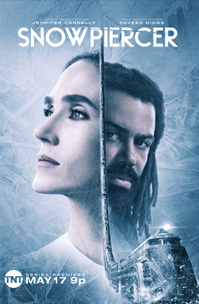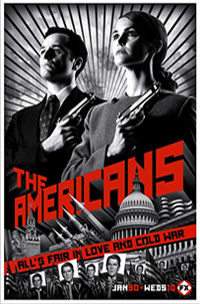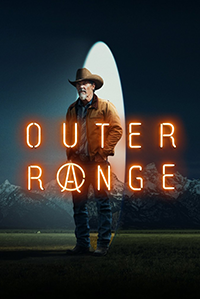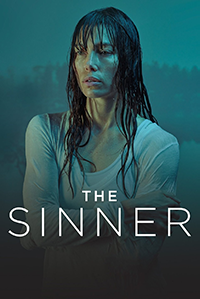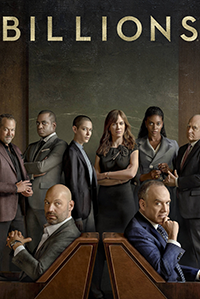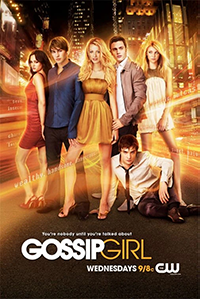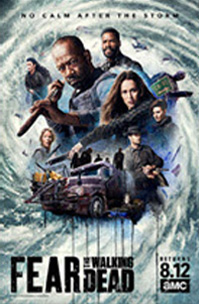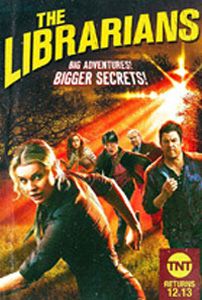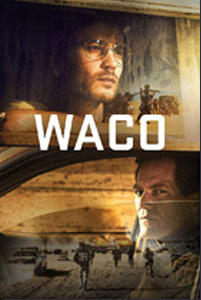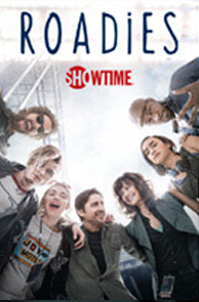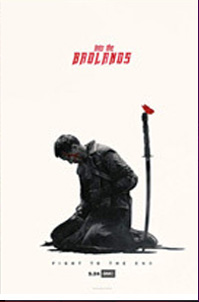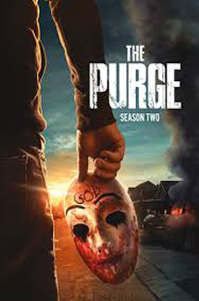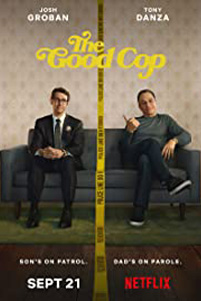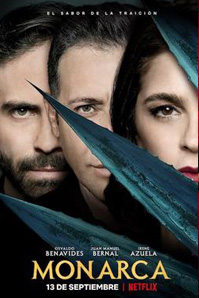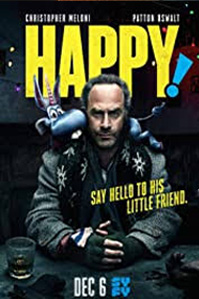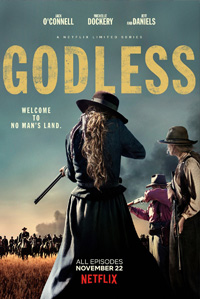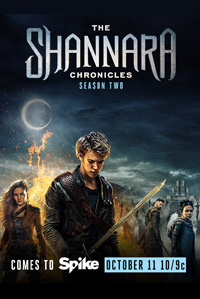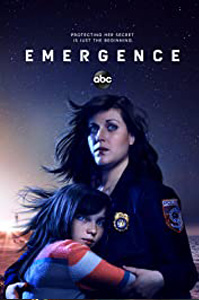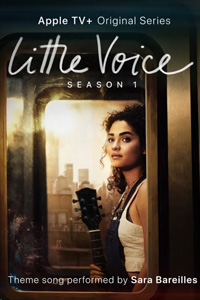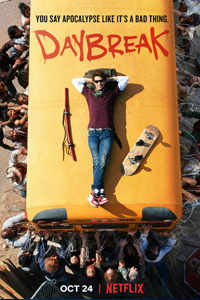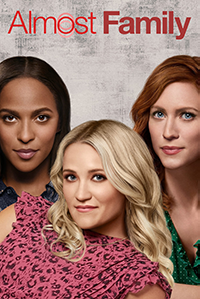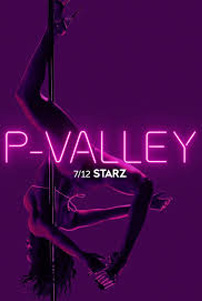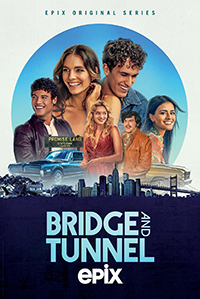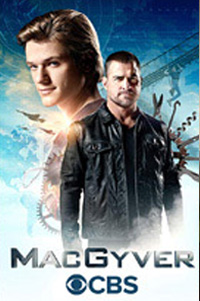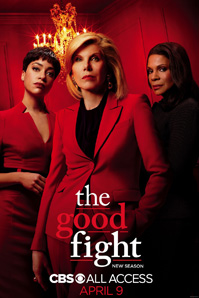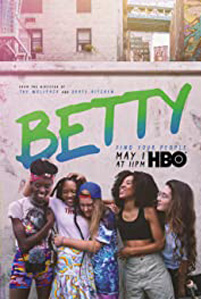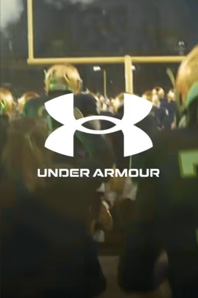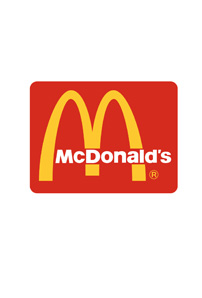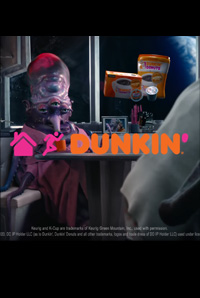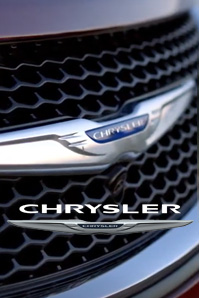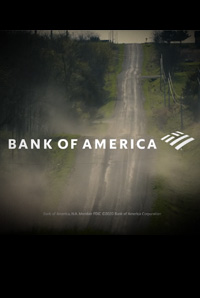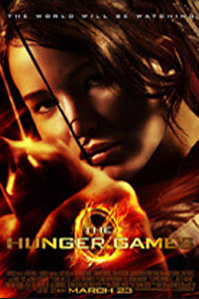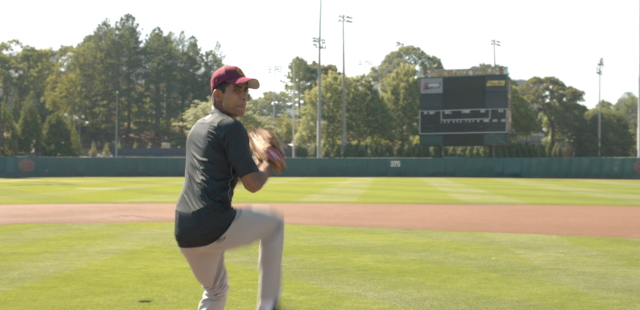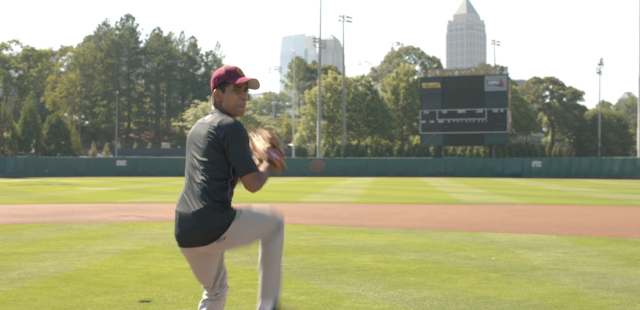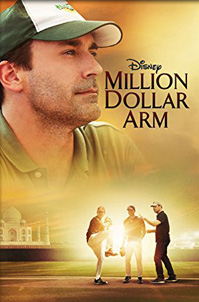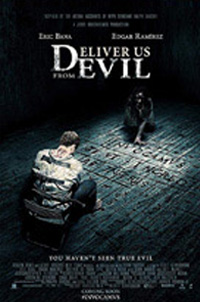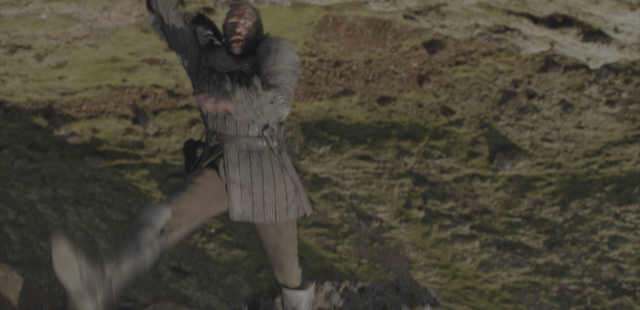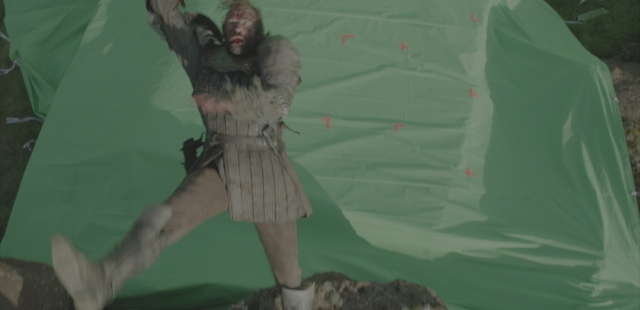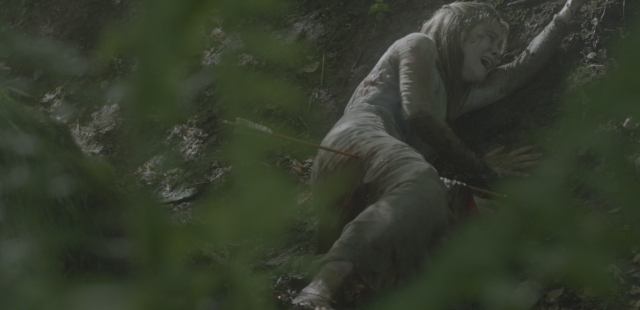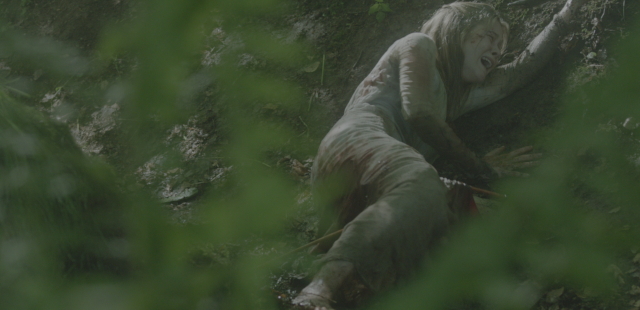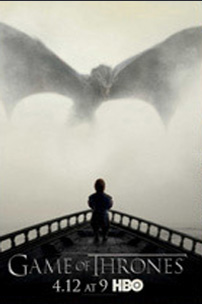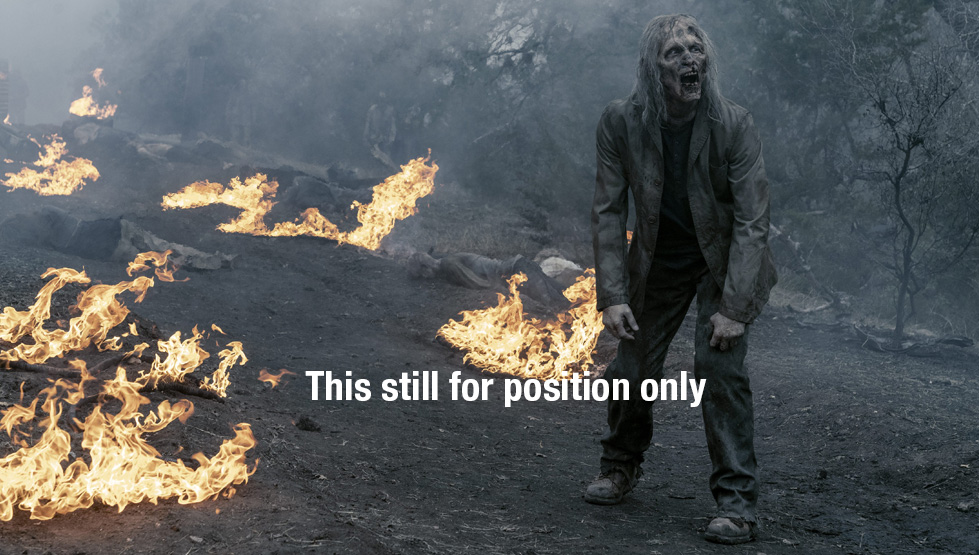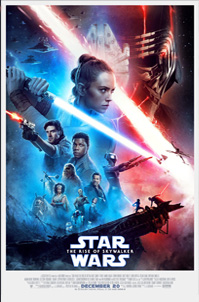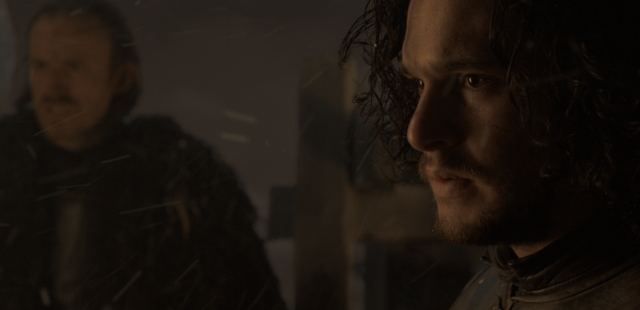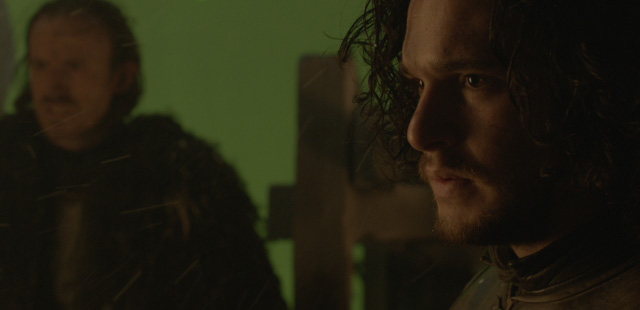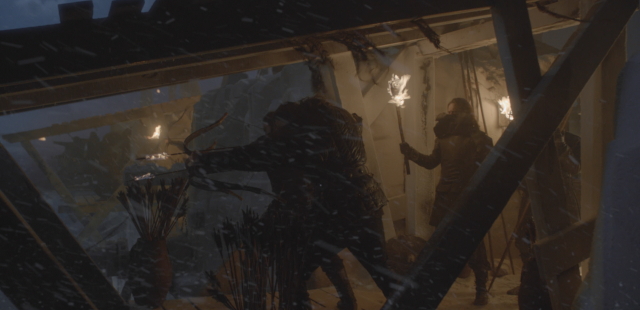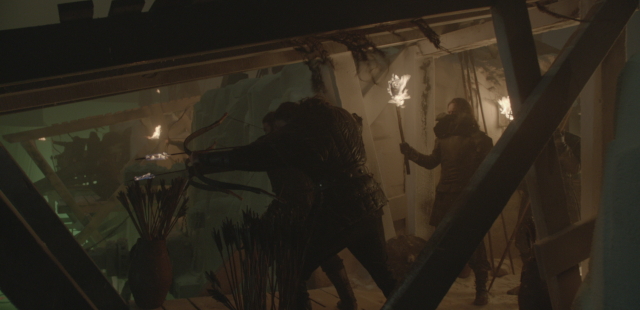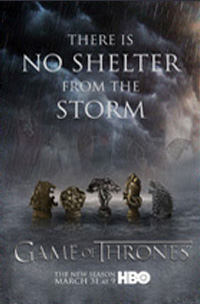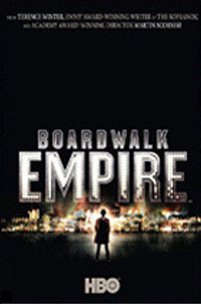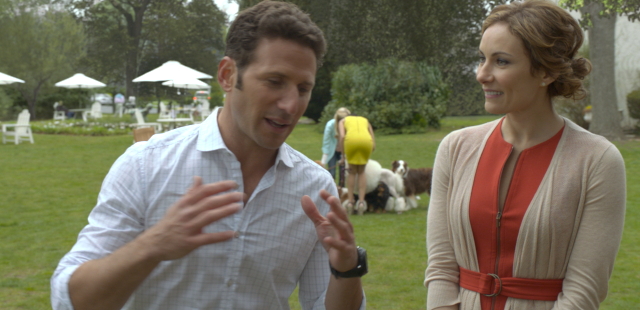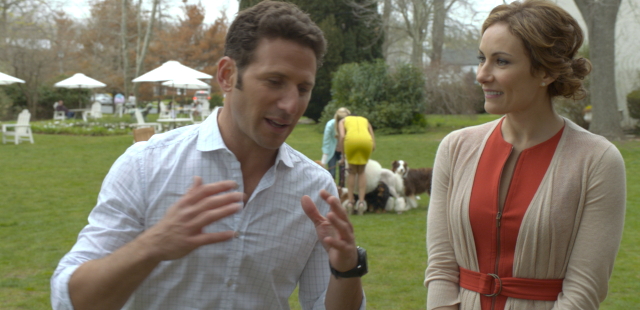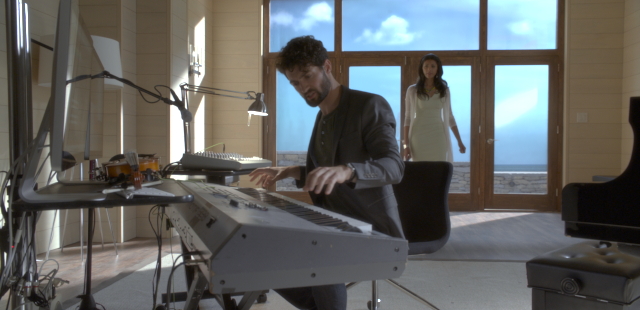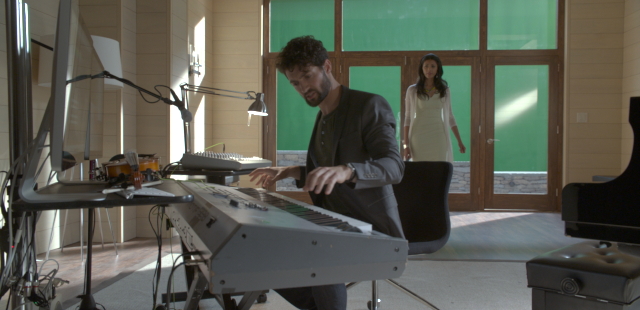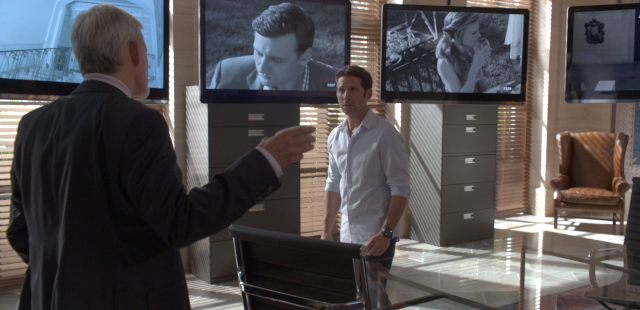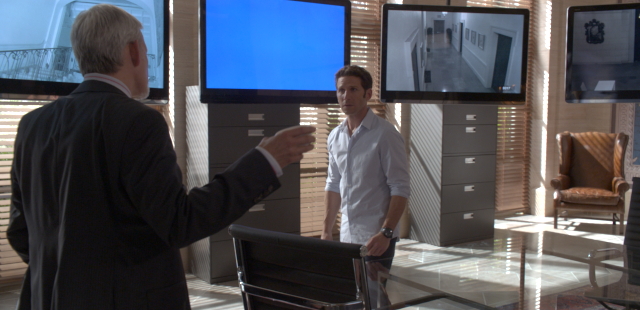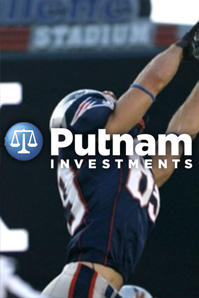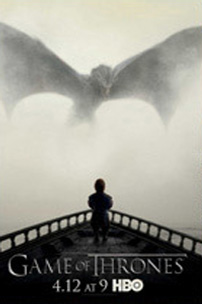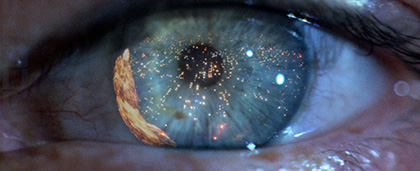
FX Sups: John Scheele and Rich Hoover. Producer: Charlie de Lauzirika.
* Proof I'm on the rght server *v4* This shot and it's sister shot in the film were composited in the Flame using the original 65mm source elements. We re-did these shots because the original optical comps in 1982 utilized still images of the eye instead of running footage. I stabilized and speed-changed the original eye photography digitally several times to slow it down and then warped the iris to create the effect that it's reacting to the explosion. I duplicated the composition of the '82 optical comps in order to remain faithful to the original film.*
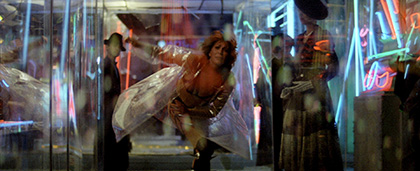
FX Sups: John Scheele and Rich Hoover. Producer: Charlie de Lauzirika.
This is probably the coolest of all the head replacement shots I did for the Blade Runner "Zhora death" sequence. As in all the Zhora shots, I started by digitally stabilizing the head of the stunt person from the original photography to create a playback reference for a forthcoming greenscreen element shoot. The head was then digitally removed in the original plate. Carefully lit and choreographed green-screen elements of Joanna Cassidy's real head were tracked on in it's place. Extensive color corrections, speed-changes and restoration of reflection elements in the foreground complete the effect.*
*Christian served as Compositing Supervisor for all work done on "Blade Runner - The Final Cut" at Sony Imageworks.
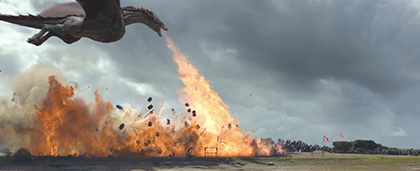
VFX Sup: Joe Bauer. Producer: Steve Kullback.
This tremendous shot was executed by Australian VFX company Iloura. I was brought in near the end to enhance the fire elements on top of their composite.
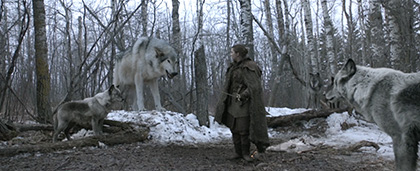
VFX Sup: Joe Bauer. Producer: Steve Kullback.
I was responsible for comping all the shots in this sequence. Since the wolves (that are real) are too dangerous to put together with actors/actresses on a set, each character was shot separately on a green screen. All five wolves are shot separately on set with green screens draped behind them. Arya is also a separate gs element. We added breath elements and snow selectively as well to enhance the effect. In this shot Nymeria gets the breath treatment.
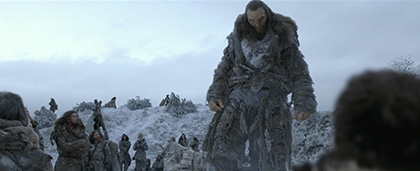
VFX Sup: Joe Bauer. Producer: Steve Kullback.
This is one of many forced perspective Wun Wun comps I was responsible for across the series. The actor playing Wun Wun, Ian Whyte, is 7’1”, but the character had to be 14+’. So, production created miniaturized set pieces for Whyte to interact with on a green screen soundstage environment. The other human actors were shot on set as you see them in the finished comp, with the exception of Jon Snow in the extreme FG who was also shot on GS on set. Campfire smoke and camera shake on the footfalls complete the illusion.
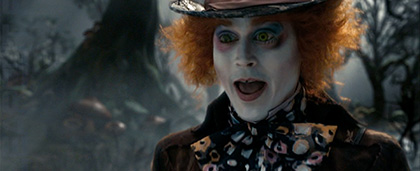
VFX Sups: Ken Ralston, Carey Villegas and Sean Phillips. Producer: Crys Forsyth-Smith.
Because the environments in the Wonderland portions of this film were entirely CG, the live action characters were shot on greenscreen and then integrated into entirely digital backgrounds. This shot was composited in Katana and is no exception. Because of number of complex setups during VFX photography (Alice's body shrinking and growing, the queen's enormous head, etc.) in order to allow for the various live-action elements to coexist in each shot, a detailed "green" set was constructed for each shot. This meant that instead of shooting actors in front of a smooth, perfectly lit chroma key background, they were instead shot in front of a background with endless shadows and highlights (created by the "green" set pieces). Obviously, this created unique challenges as a compositor. In this case, the Hatter's orange frizzy hair was exactly the same color as the background through portions of the camera move. In addition, Johnny's face was digitally altered in every shot to make is eyes larger and also to smooth out make-up issues.
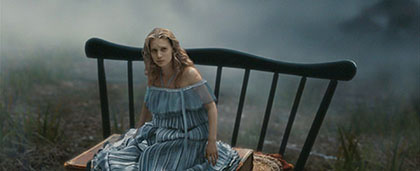
VFX Sups: Ken Ralston, Carey Villegas and Sean Phillips. Producer: Crys Forsyth-Smith.
Because the environments in the Wonderland portions of this film were entirely CG, the live action characters were shot on greenscreen and then integrated into the digital backgrounds. This shot was composited in Katana and is no exception. Alice was shot as one pass on greenscreen, the chair and book were another gs pass and the background and different sections of the shrinking dress were rendered separately in order to give me maximum control while compositing. This shot was quite tricky, due to the fact that the live-action photography of Alice is being shrunk in 2D AND had to be lined up perfectly with the CG rotomated dress animation. All of the interaction between the two was simulated in the composite (shadows, reflections, dress movement) as well as bending all the elements into the color palette of the sequence.
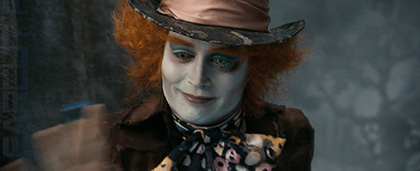
VFX Sups: Ken Ralston, Carey Villegas and Sean Phillips. Producer: Crys Forsyth-Smith.
This shot was composited by one of my colleagues at Sony Imageworks and cut in here to provide context for the previous and following shots.
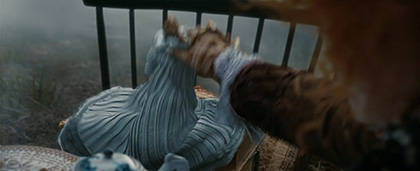
VFX Sups: Ken Ralston, Carey Villegas and Sean Phillips. Producer: Crys Forsyth-Smith.
Because the environments in the Wonderland portions of this film were entirely CG, the live action characters were shot on greenscreen and then integrated into the digital backgrounds. This shot was composited in Katana and is no exception. Various greenscreen and CG passes are combined here. The Hatter and table with plate and teapot one greenscreen pass (the Hatter grabs an Alice doll, which had to be removed), the chair and book is another gs pass and the background and dress sections are CG. All of the interaction between Alice, the dress and book and the Hatter was simulated in the composite (shadows, reflections, dress movement) as well as bending all the elements into the color palette of the sequence.
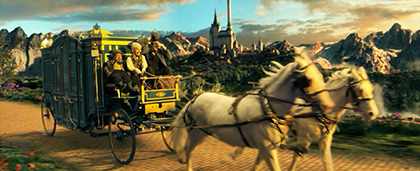
VFX Sup: Scott Stokdyk. VFX Producer: Diana Ibanez.
This challenging stereo greenscreen comp (which took weeks to complete) involved extensive cleanup to compensate for dramatic (and unavoidable) shadows which were cast on the greenscreen by the carriage and horses as they gallop past. These challenges were exacerbated by green spill issues, the extreme camera move and the massive change in the camera's distance from the subjects. When combined with the elaborate CG environment and the fact that this was a native stereoscopic show (meaning that every element had a "left eye" and a "right eye" that had to be carefully positioned in 3D space within the stereo comp). The most dramatic cleanup issue was the spinning wagon wheels… The blurred spokes were un-keyable over the dramatic shadows. I created a master looping wheel animation and then carefully tracked it into place at each wheel, being careful to maintain the effect that the wheels are deforming with the correct perspective. Many compositing techniques were employed to deal with green spill issues, flowing horse manes, blurring reins and the recreation of accurate contact shadows. The CG environment included dozens of discreet stereo layers each requiring massive color corrections and animating edge and defocus gags as the camera pans. Finally, a stereo lens flare was added and reflections were carefully created in Nuke and kissed into the windows of the carriage.
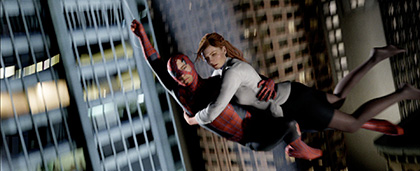
VFX Sup: Scott Stokdyk. Producer: Josh Jaggars.
Most of the high-flying shots of Spidey and other characters in SP3 were designed to be entirely CG. It became evident in many of these shots that the cg faces weren't holding up very well when the characters moved too close to the camera. Therefore, in similar fashion to the Blade Runner shots (above), greenscreen head elements of the actors were carefully choreographed and shot to serve as replacement elements. In the Flame, I replaced both Spidey's and MJ's heads with the gs elements. The elements were color corrected and lit in Flame to match the environment. Finally, cg hair and mask were replaced to complete the effect (I was responsible for a dozen or more of this type of shot in this film).
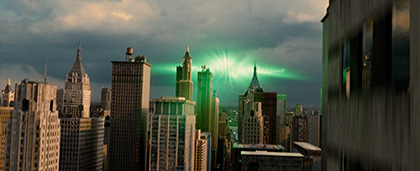
VFX Sups: Ken Ralston and Jay Redd. Producers: Eric Scott and Carey Smith.
I spent several weeks doing look development on the Time Curtain and also many of the 2D components of the shot including the time-lapse clouds and appearance of the time curtain. My colleague and fellow Nuke compositor, David Takayama, and I both worked on this composite in parallel for a period of time and then because of a scheduling issue, I ended up handing my stuff off to Dave to finish it off.
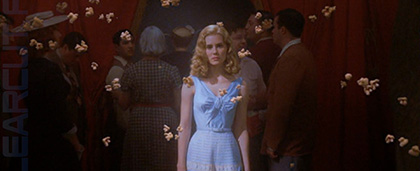
VFX Sup: Kevin Mack. Producer: Victoria Alonso.
This shot required extensive plate reconstruction to remove dolly tracks and the addition of multiple patches over the bodies of the people and animals to cover their movements (they tried to hold their bodies as still as possible, but a lot of movement remained). It turned out that the Flame 3D camera track was much better than the matchmove used to render the cg popcorn, cat, batons, etc. so I totally stabilized all the rendered cg elements and retracked them in Flame. Final comp was completed in Bonsai.
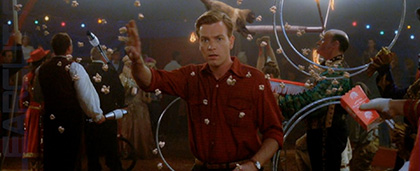
VFX Sup: Kevin Mack. Producer: Victoria Alonso.
This shot required extensive plate reconstruction to remove dolly tracks and the addition of multiple patches over the bodies of the people and animals to cover their movements (they tried to hold their bodies as still as possible, but a lot of movement remained). It turned out that the Flame 3D camera track was much better than the matchmove used to render the cg popcorn, cat, batons, etc. so I totally stabilized all the rendered cg elements and retracked them in Flame. Final comp was completed in Bonsai.
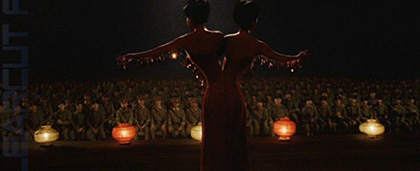
VFX Sup: Kevin Mack. Producer: Victoria Alonso.
This shot involved multiple plates. Each was exposed as a daytime shot. One plate had the actresses portraying the twins strapped together at the waist going through the choreography in front of an improvised greenscreen. Another plate was "clean". Neither plate was shot with a motion control system, so the moves were not in sync. Also, dolly tracks covered the stage on both plates. First, I resolved the motion of the elements using multiple speed changes and stabilizations. Then, once a rough build was approved by production, the CG guys built and animated a body for the girls. Using 3D tracks and projections in Flame, I removed the dolly tracks from the stage and also did a crowd extension on both sides of the audience area. Massive color corrections transform the daytime plate(s) into a night-time look. At this point, I started resolving the plate photography of the girls upper bodies with the CG lower body elements. This involved intensive warping and tracking of various elements as well as multiple color corrections. Finally, the spotlight effect (complete with dust in the light beam) and flares on the offstage lights completes the effect.
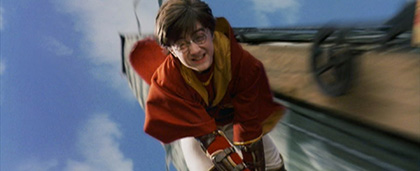
VFX Sup: Rob Legato and Jim Birney. Producer: John Clinton.
Greenscreen comp in Flame of Harry on broom in front of CG background. Greenscreen element required extensive clean-up and rig removal as well as various edge treatments and warping to simulate flapping of cape.
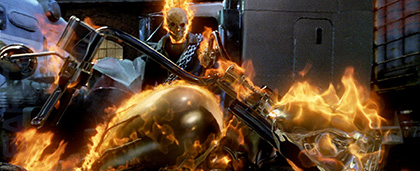
VFX Sup: Kevin Mack. Producer: Josh Jaggars.
This shot was originally designed to be a morph between the two motorcycles. Unfortunately, neither plate was shot with a motion control system and the line-up of the plates was way off. In addition, there was no clean plate available. It was determined that the bike transformation and Ghost Rider would be be entirely generated in CG. The problem that remained was that both available plates had motorcycles in the foreground obscuring almost all of the background, making it impossible to simply use patches to hide the photographed bikes. Utilizing Flame's 3D tracking system, I matched the camera move in the plate and created dozens of painted still elements that were projected to completely re-create the backplate in Flame. None of the original plates remain. I animated the blinking lights on the truck and added steam from the truck's hood to complete the effect. The CG elements (bike and GR) were then comped on top of the newly created clean plate in Bonsai.
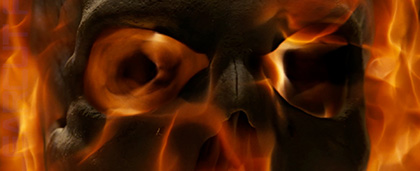
VFX Sup: Kevin Mack. Producer: Josh Jaggars.
With the exception of the initial shot in each sequence, this sequence and it's sister sequence (both representing nearly two minutes of screen time) were done entirely by me in Flame and together represent months of pre-visualization and execution. VFX Supervisor Kevin Mack, Director Mark Steven Johnson and I collaborated intensively during the development of these shots and worked from the initial concept that the viewer should experience the POV of the villain as he floats through a hell-like environment and is forced to experience the pain and suffering of all of his victims. Kevin shot a handful of dramatic "crime" vignettes for each sequence. He suggested that these vignettes should briefly appear on licks of fire that appear in the foreground as the camera floats through space. Footage of Wes Bentley (the villain) was speed changed and warped to create the frenetic head shaking elements that appear throughout the shot to convey the pain being experienced. Pacing was extremely important and because the environment was created from so many elements that were all built on top of one another, it was very important to nail the basic structure of each sequence and then not diverge dramatically from that template. While I worked on the body of each Penance Stare sequence, I started coming up with looks for the transition out of the opening shot of GR's face and the transition into the shot of the villain at the end. The fire tunnel in the opening transition was built using multiple generic fire elements and intensive speed changes and various filtering techniques. The end transition includes a virtual camera in Flame traveling in 3D space through several 2D painted elements that are displaced and lit to create the effect of stone-like charred eyeballs. Into the nooks and crannies of this "2 1/2D" stone wall are comped a variety of cg wraiths and more fire elements. The final shot of the villain required a massive speed change and stabilization. The pull out from the eye was an additional digital move and included transitions between various digital painted elements in order to maintain acceptable resolution throughout the shot. I had a blast working with Kevin and Mark on these ones.
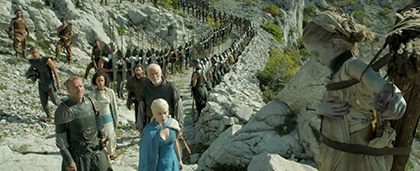
VFX Sup: Rob Legato and Jim Birney. Producer: John Clinton.
The issue here was that the "dead" actress on the crucifix couldn't hold still. Her hand, arms, head and body were moving in the original plate photography. In addition, the practical makeup wasn't "dead" looking enough. Because of the parallax created by the extreme camera move (particularly the foreground hand and crucifix) and the proximity of the slave girl to the camera, I was forced to rebuild the entire right side of the shot (from the camera all the way to the horizon). I started by doing a match move and then laying out the multiple pieces of geometry on which I then projected multiple painted patches in Nuke. I then worked for a couple of days under the supervision of Joe Bauer to develop the new, improved "dead" look. Pallid skin, sunken eyes, purple fingers and lips and faded, weathered clothing, etc. Because I essentially rebuilt the entire girl in 2 1/2D, it was a simple matter to replace the sections of her face and arms and outfit with my "dead look" paintings. Addition of a looping blowing hair element completes the effect.
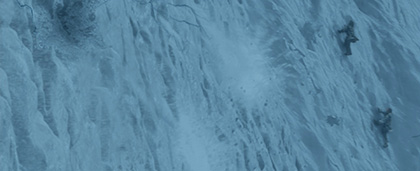
VFX Sup: Joe Bauer. Producer: Steve Kullback.
This shot includes plate photography as well as multiple practical and cg elements including blowing snow. I collaborated with a team of artists at Spin VFX in Toronto on this one. I reanimated the crack element and also comped a section of the falling snow and ice that defends from the crack as it opens.
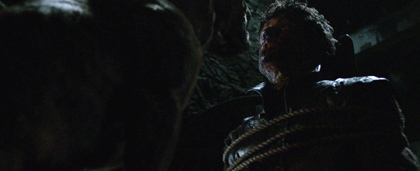
VFX Sup: Joe Bauer. Producer: Steve Kullback.
The dogs in this sequence couldn’t be shot with Iwan Rheon for safety reasons, so I comped them in for each shot. In this shot, the dog is actually licking a green ball on a green screen, so some surgery had to be done to create the interaction. Since the sequence takes place in near darkness, each element is treated as “day for night” gag, meaning there are extreme color corrections going on and detail in the blacks had to be eliminated and balanced against each other to make the comps work.
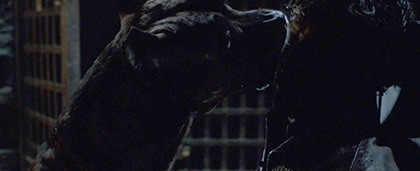
VFX Sup: Joe Bauer. Producer: Steve Kullback.
The dogs in this sequence couldn’t be shot with Iwan Rheon for safety reasons, so I comped them in for each shot. Since the sequence takes place in near darkness, each element is treated as “day for night” gag, meaning there are extreme color corrections going on and detail in the blacks had to be eliminated and balanced against each other to make the comps work.
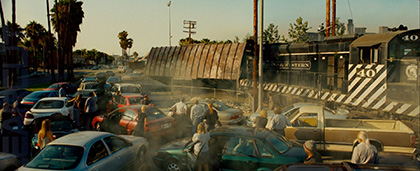
VFX Sups: John Dykstra and Ken Ralston. Producer: Josh Jaggers.
Utilizing a 3D track and multiple camera projections in Flame, extensive plate cleanup including removal of a locomotive, removal of light poles and addition of the city skyline were accomplished. Animations of falling power and light poles were also built in Flame using practical and painted elements. Once new cg locomotive elements were comped in Bonsai, additional dirt and dust animations were added in Flame to complete the effect.
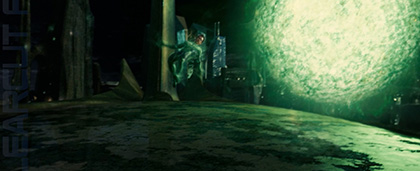
VFX Sup: Jim Berney. Producers: Crys Forsyth-Smith.
This entirely CG shot was comped in Nuke and required the creation of a handful of 2D elements, including the reflection and interactive light on the training platform and heat distortion. In addition, the CG energy being sucked away from Hal was heavily manipulated in Nuke. Dozens of CG layers make up Hal's suit and environment. They were all carefully and individually adjusted in the comp.
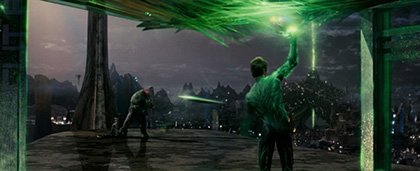
VFX Sup: Jim Berney. Producers: Crys Forsyth-Smith.
This entirely CG shot was comped in Nuke and required extensive look development in order to establish the look of Hal's "table" construct as well as his interaction with it. I was responsible for establishing the look of this "construct". As with all the shots in this sequence, dozens of cg layers make up Hal, his suit, the table and the environment and were individually manipulated in the comp in order to pull off the shot.
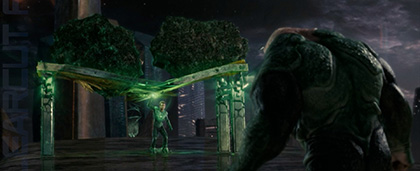
VFX Sup: Jim Berney. Producers: Crys Forsyth-Smith.
This entirely CG shot was comped in Nuke and required extensive look development in order to establish the look of Hal's "table" construct as well as his interaction with it. I was responsible for establishing the look of this "construct". As with all the shots in this sequence, dozens of cg layers make up Hal, his suit, the table, Kilowog and the environment and were individually manipulated in the comp in order to pull off the shot.

VFX Sup: Kevin Mack. Producer: Lisa Goldberg.
In order to achieve the cut-out animated feel of the rest of the film, still and animated tiles were laid out in 3D space within Flame behind a CG foreground build and animated by hand in order to fill out the back of the shot to infinity. The foreground build turned into multiple separate elements that had to be manipulated individually. On top of these elements multiple cg, painted and photographed elements were comp'ed in Flame to complete the effect. Once assembled, extensive, layered color timing in Flame completes the effect. This was a very complex build involving dozens of elements, all of which were manipulated in Flame.
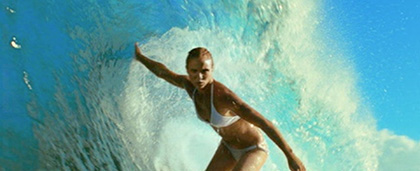
VFX Sup: Mark Stetson. Producer: Crys Forsyth-Smith.
Plate photography was jet-ski footage of a professional female surfer. The selected take was analyzed in Flame and stabilized to create a playback reference for a forthcoming greenscreen shoot with Cameron Diaz. Diaz's head was carefully lit and movements were choreographed to create a greenscreen head replacement element. This was tracked and fully integrated in Flame. Once I had the head on, it was determined that the body of the stunt person was too muscular, so I digitally removed arm, shoulder and leg muscle mass to create the final product.
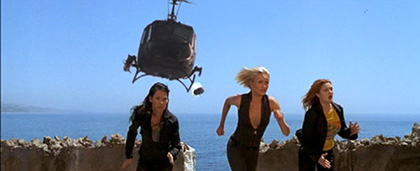
VFX Sup: Pat McClung. Producer: Dave Taritero.
The plate was shot with no chopper. I extracted a chopper from a stock element, speed changed it and created a rotor blade animation in Flame using photographed and painted stills. The missile was created in CG and comped in Flame. Color corrections and various edge treatments were applied to integrate the elements. The Angels hair and bodies were keyed and rotoscoped in front of the chopper. A heat distortion effect and windshield glint were created in Flame to complete the shot.
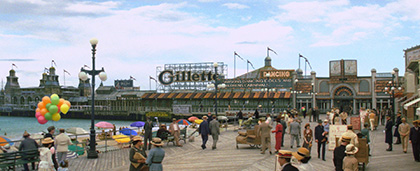
VFX Sups: Dave Taritero and Justin Ball. Producer: Dave Taritero and Rich Friedlander.
This is an enormous blue screen set extension. The boardwalk set is actually not on the ocean and the 1920s Atlantic City boardwalk and pier no longer exist, so everything but the boardwalk set itself had to be simulated in the composite. Numerous matte paintings (created by Robert Stromberg), dozens of photographed beach elements (including beach, water, beachgoers, umbrellas) and numerous other painted elements were manipulated and projected in 2 1/2D in Nuke to build this complex composite. A matchmove was provided by Yannix and some projection geometry was provided by the CG team at Brainstorm Digital, but otherwise, everything else was accomplished by me in Nuke including the articulated roto necessary to separate the foreground people and objects that occluded the set-extension elements near the end of the shot when the crane dips below the reach of the blue screen wall along the boardwalk. From start to finish, this shot took about six weeks to accomplish.
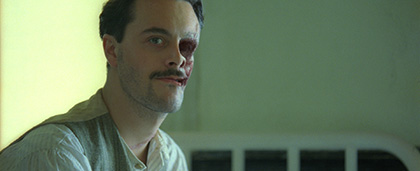
VFX Sups: Dave Taritero and Justin Ball. Producer: Dave Taritero and Rich Friedlander.
This is a 2 1/2D gag, utilizing a couple of paintings provided by the client, which were projected on rough geometry after the shot was match moved in Nuke. Subtle lighting shifts and the crude projection geometry meant that meticulous 2D warping and color corrections had to be made as the head turns. A section of the face of the actor (who has no such injury) had to be removed, by patching in a section of wall behind his head.
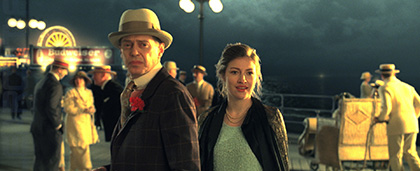
VFX Sups: Dave Taritero and Justin Ball. Producer: Dave Taritero and Rich Friedlander.
Bluescreen comp. Everything behind the boardwalk railing has been replaced with Robert Stromberg's static, 2D matte paintings. All tracking, animation of water and surf, buoy lights, and ferris wheel and other carnival rides were done in Nuke. 2D animations, narrow depth of field, fly-away hair and glowing boardwalk and bg lights make for a moderately challenging comp.
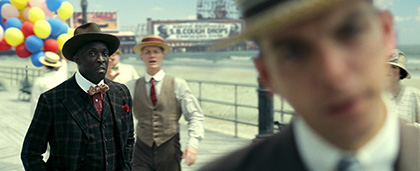
HBO Promotional department and Brainstorm Digital.
Bluescreen comp. Everything behind the boardwalk railing has been replaced with Robert Stromberg's static, 2D matte paintings and photographed ocean/beach elements. The matchmove was done by Yannix, but otherwise everything else was accomplished in Nuke. Shot duration, narrow depth of field, extreme camera move, rack focus and numerous foreground people and objects make for a moderately challenging comp. For this promo, we also dialed in a unique color correction to distinguish this dream sequence from the normal color palette of the show.
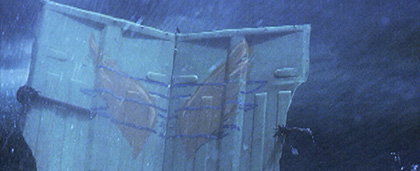
VFX Sup: Ken Ralston and Rob Legato. Producer: Debbie Denise.
Original plate of Tom Hanks on raft in a water tank. Practical cloud elements as well as cg and practical water elements were combined in Flame to create night-time ocean midground and background. Lightning cloud animations were also created in Flame. "Sail" is a cg element and falling rain in foreground is a combination of practical and cg elements. Abrupt animated color corrections of foreground and background elements simulate lightning flashes. Digital camera tilt as sail flies away and extra camera shake completes the effect.
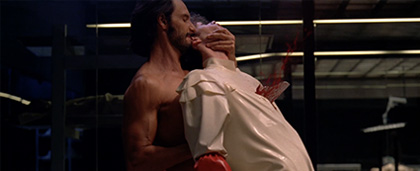
I did this shot on assignment for my friends and colleagues at Chicken Bone VFX. Beneath Hector’s coat is a blood squib. I comped one half of a CG blade in the Host’s hand and the other emerging from Hector’s chest as the squib fires. Then enhanced the spraying blood with practical elements to complete the effect.
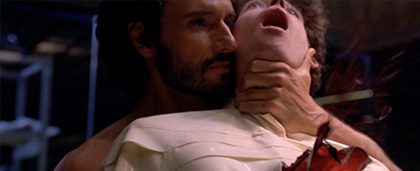
I did this shot on assignment for my friends and colleagues at Chicken Bone VFX. Beneath Hector’s coat is a blood squib. I comped one half of a CG blade emerging from Hector’s chest as the squib fires. Then enhanced the spraying blood with practical elements to complete the effect.
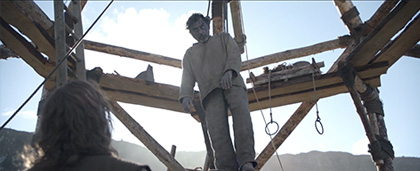
VFX Sup: Joe Bauer. Producer: Steve Kullback.
Ian McShane was rigged up there practically, but with several more ropes holding him in place that had to be removed in comp, which was extremely challenging considering the camera movement and lens flares. Entire sections of the wooden structure and sky, etc. had to be rebuilt using a 3D camera and geo in Nuke. Once that was accomplished, Mr. McShane looked very much alive and was even moving his face and hands subtly. All of that movement was eliminated with a series of patches and the dead pallor of his skin was accomplished with a variety of color corrections. Special care was taken to retain moving hair and clothing.
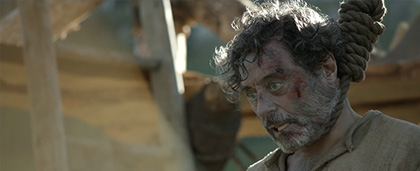
VFX Sup: Joe Bauer. Producer: Steve Kullback.
Ian McShane was rigged up there practically, but with several more ropes holding him in place that had to be removed in comp. Once that was accomplished, Mr. McShane looked very much alive and was even moving his face and hands subtly. All of that movement was eliminated with a series of patches and the dead pallor of his skin was accomplished with a variety of color corrections.
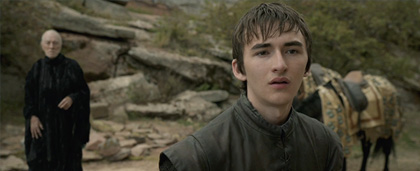
VFX Sup: Joe Bauer. Producer: Steve Kullback.
I comped the Von Sydow green screen element in at the head of the shot. Easy peasy… Elegant simplicity and a powerful effect!
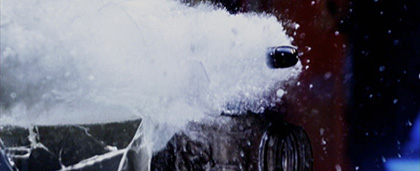
VFX Sups: Rob Legato and Carey Villegas. Producer: David Taritero.
A super high-speed camera recorded an actual bullet being fired through the bottles in four passes creating a series of tiles that I seamed together in the Flame. A virtual Flame camera then tracks over the tiles, following a cg bullet that replaces the real one from the original photography (The original was bent and distorted from hitting the glass). This was entirely composited on the Flame and involved many technical challenges including the seaming of moving tiles that were shot in different takes and had horrible registration issues, correction of extremely low exposure on the original photography as well as the creation of the background elements from multiple photographed and painted elements.
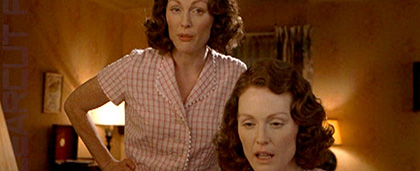
VFX Sup: Sheena Duggal. Producer: Craig Sost.
Dual motion control passes of Julianne Moore allow for her to appear together with herself in this shot. Neither take was shot on greenscreen, therefore, resolving the split line between the two takes was challenging. As is typical, the motion control camera moves were not precisely the same. This necessitated stabilization and retracking in order to make the two sections fit together properly. Also, shadows and lighting were slightly different and therefore a few patches were tracked in the background to hide them. Frizzy hair on the foreground Evelyn had to be tracked in on top of the split line. I also replaced the descending paper in the typewriter at the head of the shot. Finally, this shot (like others in the film) received an extreme color correction to simulate the look of Kodachrome film.

